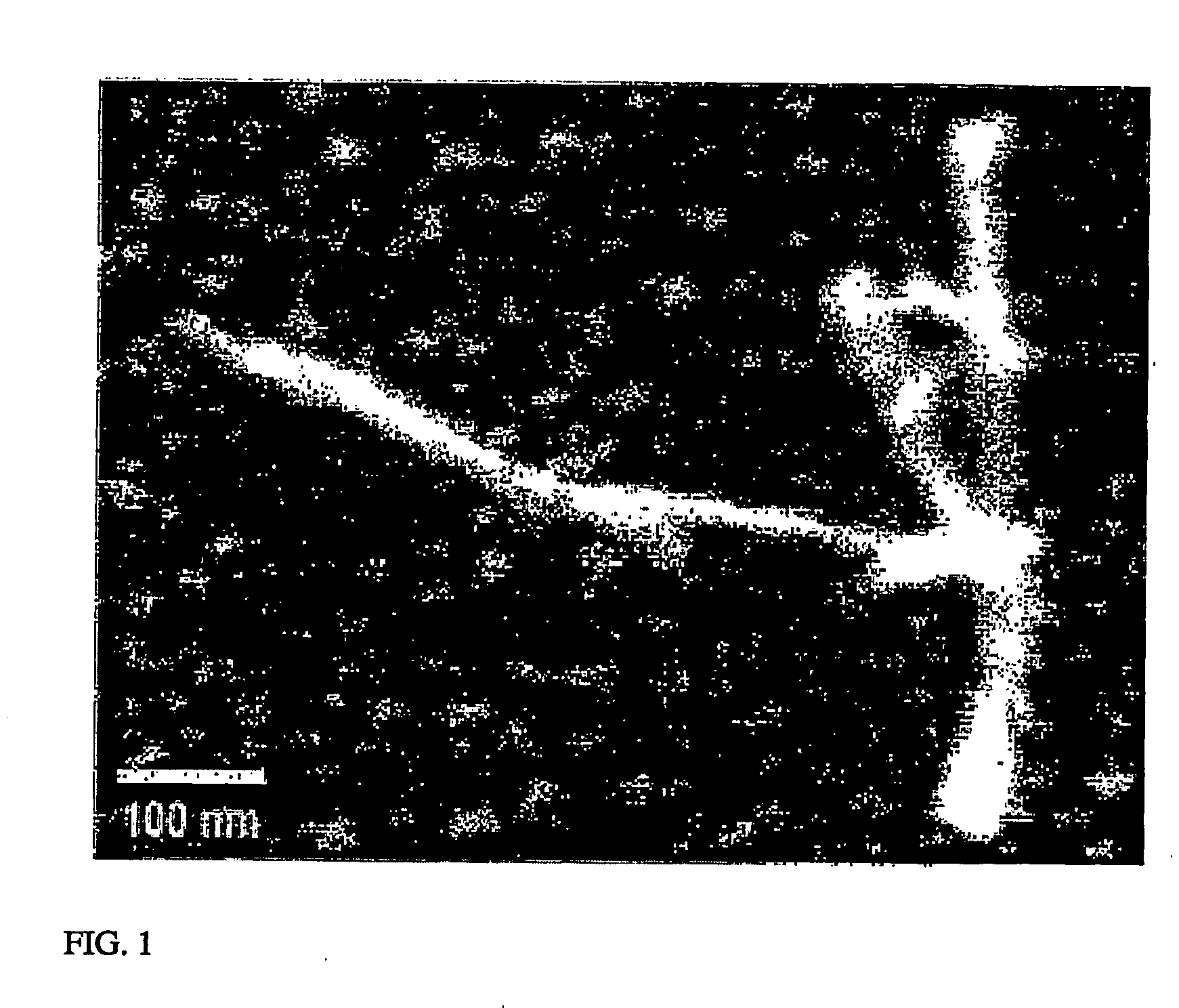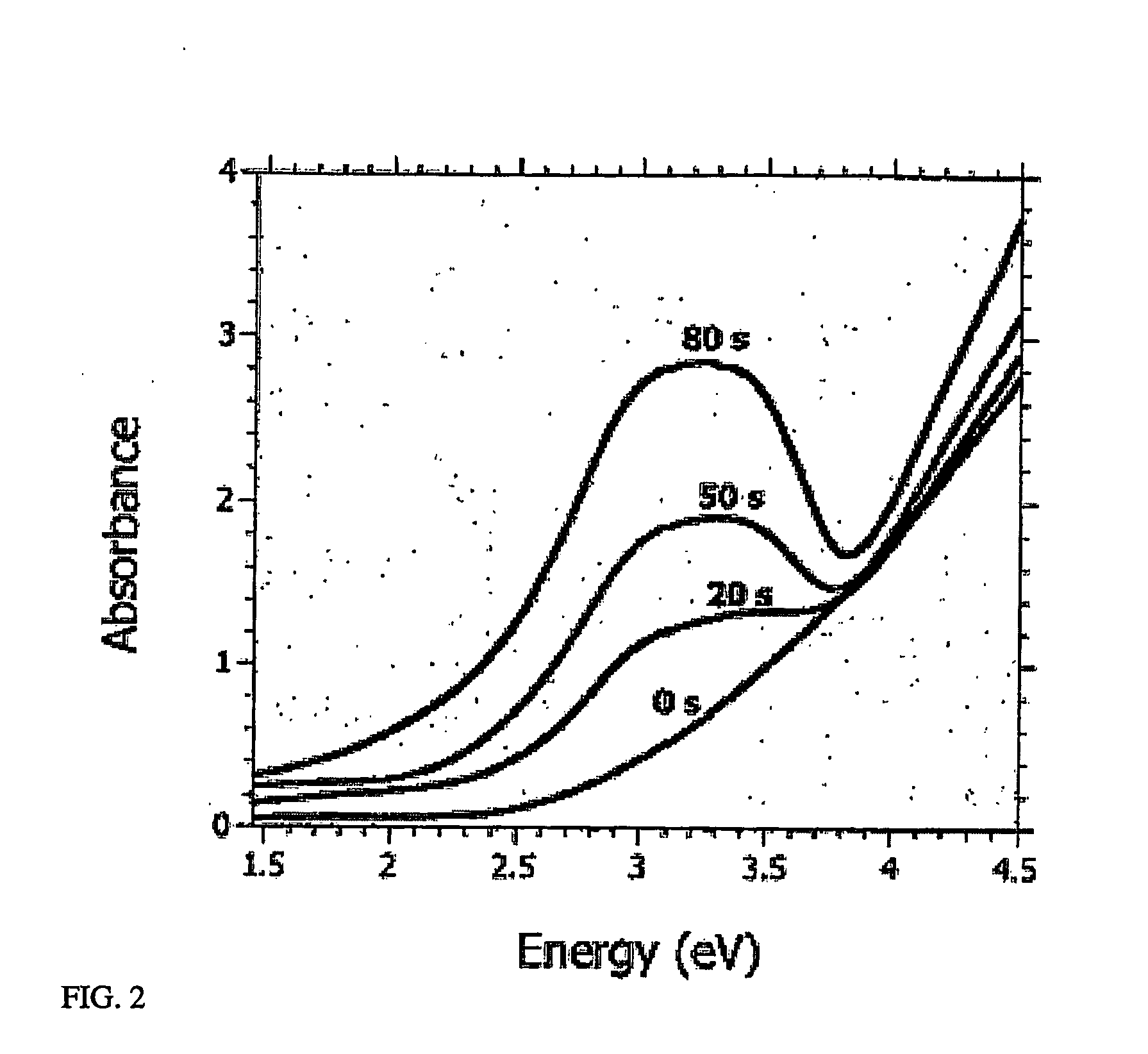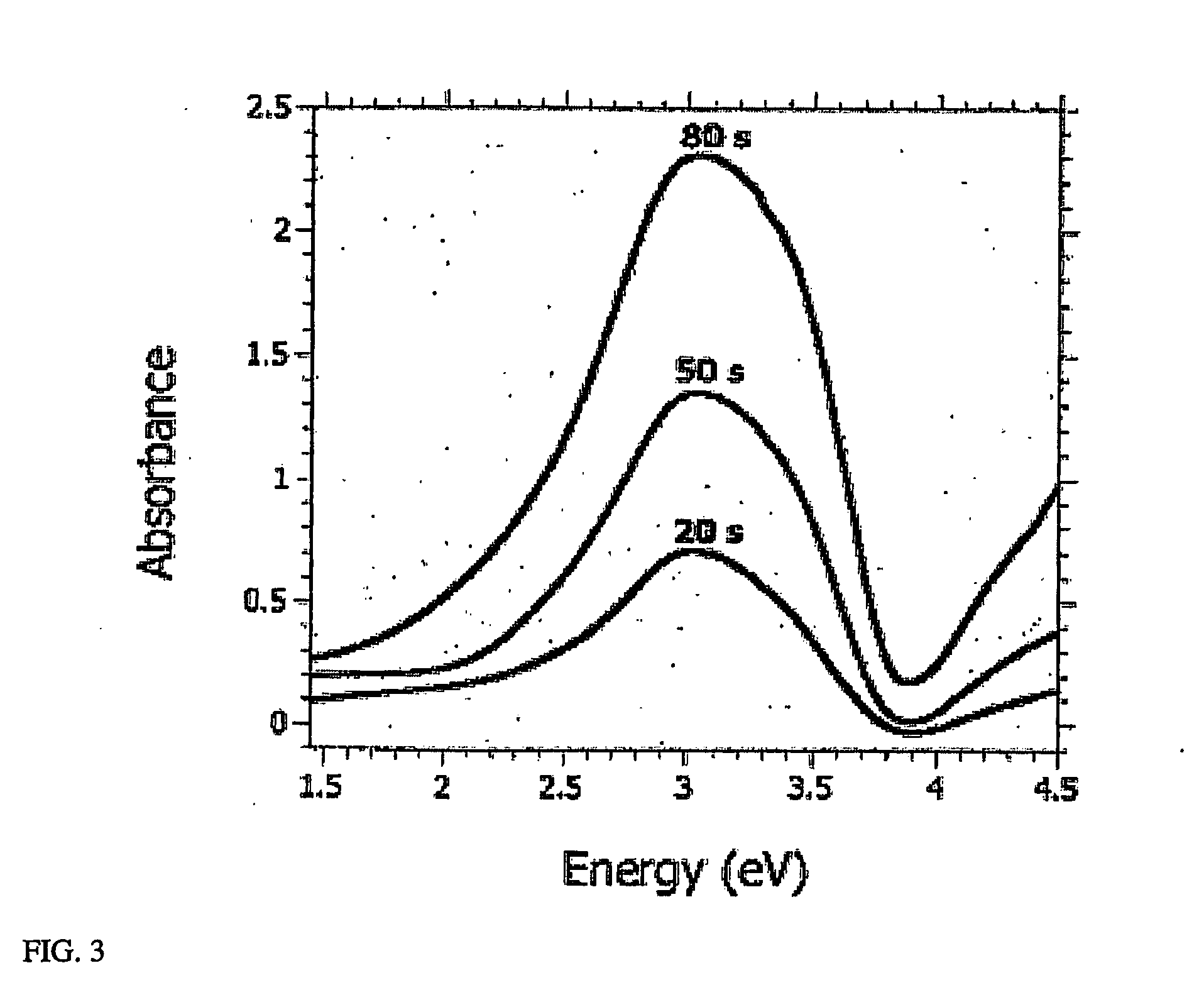Nanoparticle coated nanostructured surfaces for detection, catalysis and device applications
a nanostructured surface and nanoparticle technology, applied in the field of nanoparticles and nanostructures, can solve the problems of insufficient sensitivity of surface raman scattering, inability to generate a strong restoring force, and large fluorescence bands that are relatively insensitive to molecular structure, etc., and achieve enhanced surface raman scattering and strong surface plasmon optical absorption
- Summary
- Abstract
- Description
- Claims
- Application Information
AI Technical Summary
Benefits of technology
Problems solved by technology
Method used
Image
Examples
Embodiment Construction
[0035] A non-vacuum-based, non-collodial chemistry-based method of synthesizing metal nanoparticles and nanoparticle-nanostructured material composites obtained by that method are disclosed hereinbelow.
[0036] In an embodiment of the method of this invention for synthesizing macro, micro or nanoscale nanoparticles, a fluid stream, carrying a precursor solution is directed over the nanostructured / nanotextured material initiating a nanoparticle synthesis and entraining the nanoparticles in the flow. A fluid stream may be created in a macro, micro or nanoscale fluidics system by either electrokinetic or hydrodynamic pumping. A fluid stream is relative motion of a fluid with respect to the nanostructured material. In one embodiment, but not limited to, a salt solution is stirred in a beaker and the nanostructured material is placed (“dipped”). When the nanostructured material is at rest with respect to the beaker, the nanostructured material will be in a flow stream. The Particle precur...
PUM
| Property | Measurement | Unit |
|---|---|---|
| roughness | aaaaa | aaaaa |
| pore size | aaaaa | aaaaa |
| size | aaaaa | aaaaa |
Abstract
Description
Claims
Application Information
 Login to View More
Login to View More - R&D
- Intellectual Property
- Life Sciences
- Materials
- Tech Scout
- Unparalleled Data Quality
- Higher Quality Content
- 60% Fewer Hallucinations
Browse by: Latest US Patents, China's latest patents, Technical Efficacy Thesaurus, Application Domain, Technology Topic, Popular Technical Reports.
© 2025 PatSnap. All rights reserved.Legal|Privacy policy|Modern Slavery Act Transparency Statement|Sitemap|About US| Contact US: help@patsnap.com



